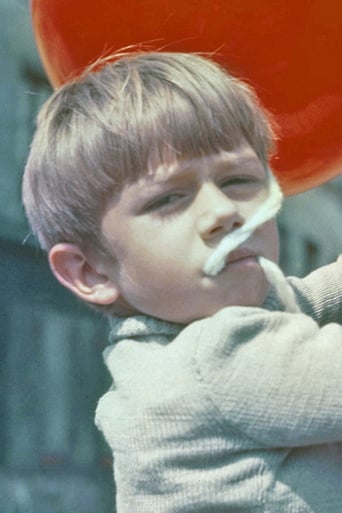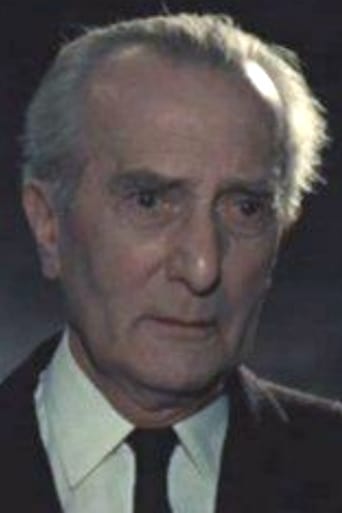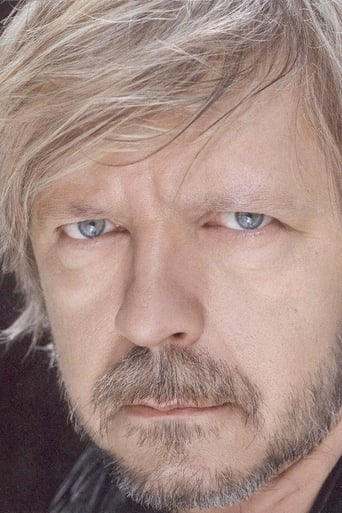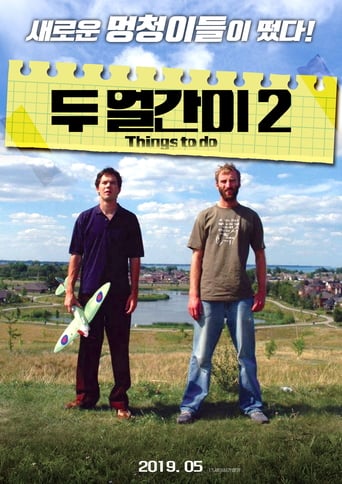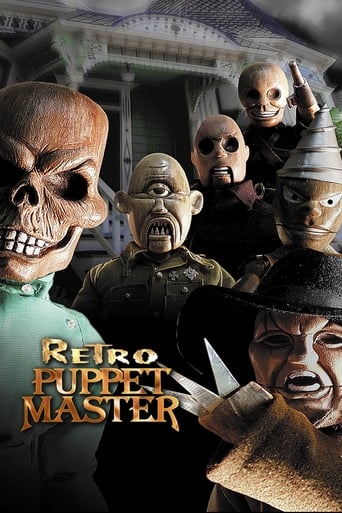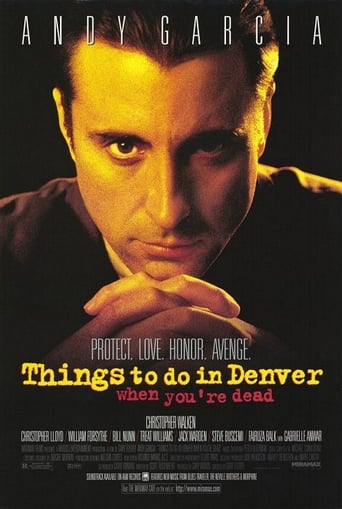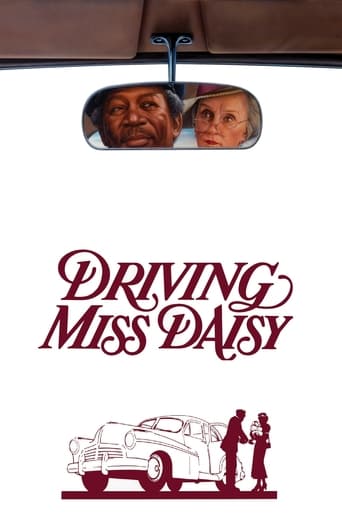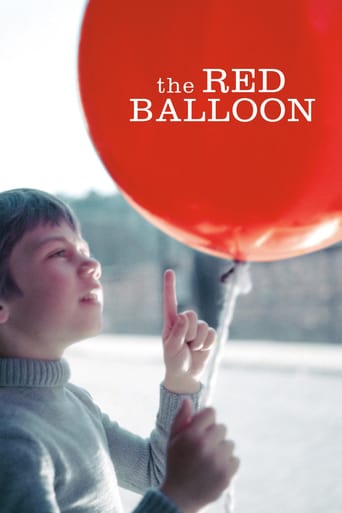
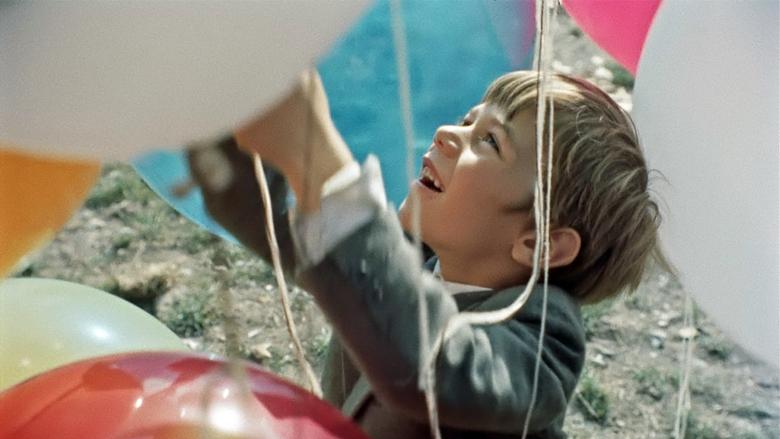
The Red Balloon (1957)
A young boy discovers a stray balloon, which seems to have a mind of its own, on the streets of Paris. The two become inseparable, yet the world’s harsh realities finally interfere.
Watch Trailer
Cast


Similar titles
Reviews
I knew about this film since I was a kid and had heard great reviews about it, although I never saw it .myself when I was young I finally got to watch it recently as an adult and although I watched it with interest and high expectations I was somewhat disappointed that it did not move me us much as I expected. I totally understand those that watched this movie when young and could identify themselves with the boy in the film. Probably at that time it was great and now they are re-experiencing those emotions with nostalgia. But I think it will not bring the same thing out of the new generations nor from the adults watching the film for the first time. In summary, it was cute, not a bad experience and one of those films that you HAVE to watch, but outdated.
"The Red Balloon" ("Le Ballon Rouge") is a well-known short by the French filmmaker Albert Lamorisse. The film, which lasts just over half an hour, tells a simple story with very little dialogue. One day a young boy named Pascal, while on his way to school, finds a red balloon drifting through the streets of Paris. The balloon appears to have a mind of its own and follows Pascal wherever he goes. It even obeys his commands, remaining outside a shop like a well-behaved dog when he tells it (in one of the few lines of dialogue) "Ballon! Attends-moi la!" The film then follows the adventures of Pascal and the balloon throughout the day. A British or American filmmaker would probably have set this story in the well-trodden tourist quarters with plenty of shots of the Eiffel Tower, Arc de Triomphe, Sacre-Coeur and other landmarks. Lamorisse, however, shot it in the working-class Belleville area with no well-known landmarks in sight. In the fifties Belleville was regarded as a slum area, and many of the buildings shown here were demolished as part of a slum clearance programme in the early sixties. The colours, principally greys, browns and dark blues, are mostly sombre; for most of the film the only bright colour is the red of the balloon, except during a brief sequence in which Pascal meets a little girl who has her own bright blue balloon, which also seems to follow her about. With a theme like this, the film would seem to have been aimed at children, and indeed it has always been popular with younger audiences. It has also, however, been popular with adults who have (as is often the way with adults) tried to find deeper meanings in it. The balloon, which drifts not with the wind but wherever it wants to, becomes a symbol of freedom; it may obey Pascal but only does so because it has befriended him. Its colour, red, has traditionally been the colour of socialism and the Left, so there may be a political subtext here. On the other hand, the balloon has also been seen as a Christian symbol. (It is notable that a church is a prominent feature in many scenes). This element is particularly strong in the scene in which a gang of bullies, envious of Pascal's new toy which also serves as his playmate, destroy the balloon with their catapults. In this context the balloon's colour takes on a very different meaning, because red in Christianity is the colour of martyrdom and sacrifice. The film's ending, in which hundreds of other balloons of many different colours lift Pascal high above the city, can therefore have several meanings. It can be an image of the hope which enables us to rise above our surroundings. It can be symbolic of political liberation. Or it can be an allegory of Christian resurrection. Or it can simply be the charming end to a magical children's film with no deeper meaning. Lamorisse has achieved the difficult feat of making a film which can be one thing to children and another to adults. This feat of condensing so much into a short film meant that, despite the sparseness of its dialogue, "The Red Balloon" became the first, and so far only, short to win the Academy Award for Best Writing (Original Screenplay). 8/10
Last time I watched this film, I was a school kid and watched it on a black and white television. So it was more the grey balloon. Now many years later I got the opportunity to watch it in high definition. It certainly rekindled memories of my younger days and the film certainly retains it charms, in fact its power and influence has grown.Having visited Paris many times, it seems rather eerie to see the Paris of yesteryear, much of which no longer exists with very few recognizable picture postcard scenes of the city. The film is simple, charming but with a technical brilliance as the filmmakers used thin wires to control the balloon.The plot involves a young boy who finds a bright red balloon and it simply starts to follow him everywhere with seemingly sentient abilities. Soon other kids want to take it away from him and even destroy it. The film has little dialogue and a good use of music and colour.The film might be deemed to be a parable, the importance of friendship and might also have religious overtones. The boy, who happens to be the director's son is charming. This short film deserves its reputation and all the awards it won.
Splendid short movie dealing with the fantasy world of children . A red balloon with a life of its own follows a little boy (Pascal Lamorisse , son of director Albert Lamorisse) around the streets of Paris . Balloon and young boy play together in the streets and slums of Paris and attempt to elude a band of boys that wants to explode the balloon . This timeless movie displays haunting and powerful scenes , it's plenty of frames which stay forever in the mind and there is almost no dialog spoken . The story is narrated with sensitivity and intelligence and is treated a simple adventure developed in great sense of ductility and fairness . In spite of runtime is short , this is a medium-length film, as the run is 35 minutes , it is entertaining , amusing and funny . The gentle humor developed in the film is clever and agreeable and dealing with fantastic as well as surrealist deeds . The plot is plain and simple though is only set in Parisian streets , it isn't dreary , neither boring but fun . Director tirelessly maintains the humorous ingenuity and including fantasy as when the balloon following the little boy around like a pet . Spectacular as well colorful finale when other balloons of various sizes and colors descend on the boy from all parts of Paris, and together they lift him into the sky and take him away over the horizon . Lively musical score is enjoyable and cheerful . The motion picture received awesome reviews and deserves the complete knowledge , acquiring an international reputation for its poetic quality ; receiving a grand prize at the Cannes Film Festival, and also winning an American Academy award. In fact , with its Oscar win for Best Original Screenplay, the film is the only short film to win an Academy award outside of the short film categories . The picture is nowadays considered to be an European cult film and it had one of the largest non-theatrical runs in the history of American cinema , as thousands of 16-millimeter prints were distributed to schools across the country. The motion picture was stunningly directed by Albert Mamorisse , he was born in Paris and was killed, at 58 , in a helicopter crash while shooting a documentary near Teheran . He was former photographer, he turned to directing short subjects in the late 40s, and 50s involving the childhood and fantastic events . His most successful movies were ¨Crin Blanc¨ (1953) also starred by his son Pascal Lamorisse and ¨The Red balloon¨ (1956) , the latter winning an Academy Award , as it won the Oscar for Best Original Screenplay, even though it has little dialogue . In the early 60s he turned to feature length films such as ¨Bim¨ and "Stowaway in the Sky" equally starred by his son Pascal , but with considerably less success, then retreated to documentary shorts . His last picture was ¨Le Vent Des Amoureux¨ (1978), a visually stunning helicopter tour of Iran, was later edited from his notes and was nominated for an Oscar as best feature documentary for the Academy award ceremonies of 1979.


